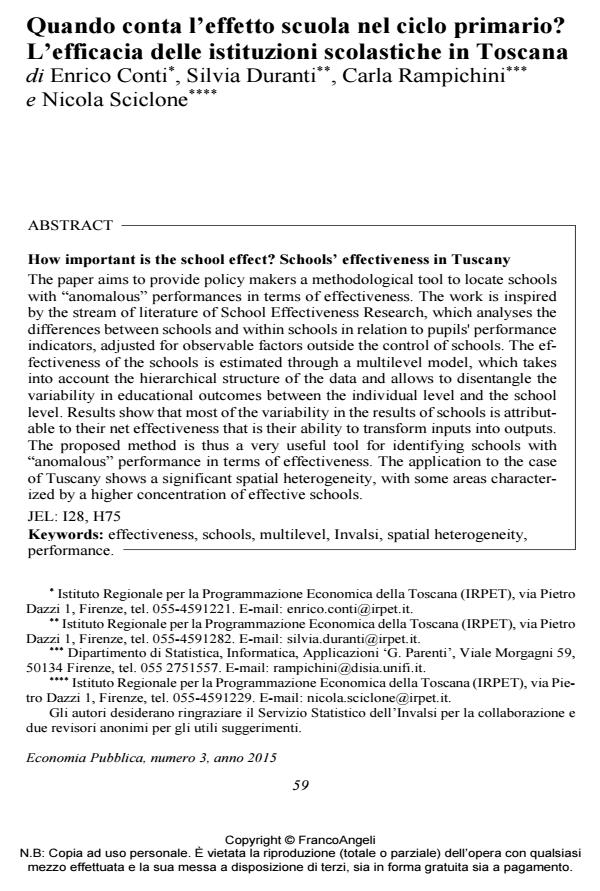How important is the school effect? Schools’ effectiveness in Tuscany
Journal title ECONOMIA PUBBLICA
Author/s Enrico Conti, Silvia Duranti, Carla Rampichini, Nicola Sciclone
Publishing Year 2016 Issue 2015/3
Language Italian Pages 26 P. 59-84 File size 319 KB
DOI 10.3280/EP2015-003003
DOI is like a bar code for intellectual property: to have more infomation
click here
Below, you can see the article first page
If you want to buy this article in PDF format, you can do it, following the instructions to buy download credits

FrancoAngeli is member of Publishers International Linking Association, Inc (PILA), a not-for-profit association which run the CrossRef service enabling links to and from online scholarly content.
The paper aims to provide policy makers a methodological tool to locate schools with “anomalous” performances in terms of effectiveness. The work is inspired by the stream of literature of School Effectiveness Research, which analyses the differences between schools and within schools in relation to pupils' performance indicators, adjusted for observable factors outside the control of schools. The effectiveness of the schools is estimated through a multilevel model, which takes into account the hierarchical structure of the data and allows the disentangle the variability in educational outcomes between the individual level and the school level. Results show that most of the variability in the results of schools is attributable to their net effectiveness, that is their ability to transform inputs into outputs. The proposed method is thus a very useful tool for identifying schools with “anomalous” performance in terms of effectiveness. The application to the case of Tuscany shows a significant spatial heterogeneity, with some areas characterized by a higher concentration of effective schools.
Keywords: effectiveness; schools; multilevel; Invalsi; spatial heterogeneity; performance
Enrico Conti, Silvia Duranti, Carla Rampichini, Nicola Sciclone, Quanto conta l’effetto scuola nel ciclo primario? L’efficacia delle istituzioni scolastiche in Toscana in "ECONOMIA PUBBLICA " 3/2015, pp 59-84, DOI: 10.3280/EP2015-003003